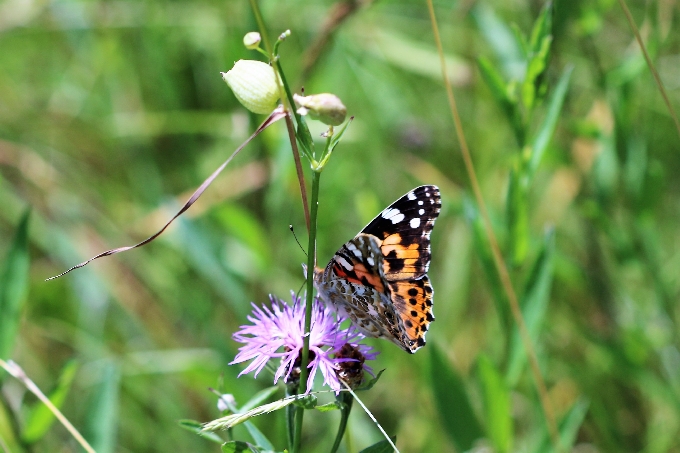CroBarFauna – DNA Barcoding
The scientific project CroBarFauna is financed by HRZZ – Croatian Science Foundation
Project Manager:
Tenured Professor Mladen Kučinić – Faculty of Science, University of Zagreb
Collaborators on the project (in alphabetical order):
Branka Bruvo Mađarić, PhD (Ruđer Bošković Institute), Darko Cerjanec, PhD (Barilović Primary School and Netretić Primary School, Karlovac County), Anđela Ćukušić, MSc in Biology (Ministry of Environment and Energy of the Republic of Croatia), Irena Grbac, PhD (Croatian Natural History Museum, Zagreb), Iva Mihoci, PhD (Croatian Natural History Museum, Zagreb), Tenured Professor Stjepan Krčmar, PhD (the University of Osijek), Ana Mrnjavčić Vojvoda, PhD (Croatian Centre for Agriculture, Food and Rural Affairs, Zagreb), Asocciate Professor Jasna Lajtner, PhD (Faculty of Science, University of Zagreb), Nediljko Landeka, PhD (Istrian Region Public Health Institute, Pula), Vlatka Mičetić Stanković, PhD (Croatian Natural History Museum, Zagreb), Roman Ozimec, MSc (Adipa, Zagreb), Martina Podnar Lešić, PhD (Croatian Natural History Museum, Zagreb), Ignac Sivec, PhD (Ljubljana), Martina Šašić Kljajo, PhD (Croatian Natural History Museum, Zagreb), Lucija Šerić Jelaska, PhD (Faculty of Science, University of Zagreb), Assistant Professor Mauro Štifanić, PhD (Juraj Dobrila University of Pula), Nikola Tvrtković, PhD (Zagreb), Marina Vilenica (Faculty of Teacher Education, University of Zagreb), Ivan Vučković, PhD (Elektroprojekt)
Duration of the project:
48 months
About the project

The DNA barcoding method was proposed in 2003 as a universal system for determining biological material in terms of species identification, and also as a method for discovering new, yet undescribed species that cannot be distinguished from each other based on morphological characteristics (the so-called cryptic species). It is based on the determination of the nucleotide sequence of a standardized fragment of the mitochondrial gene for a subunit I of cytochrome oxidase (COI) with a length of about 650 bp.
Due to its geographical location in Central Europe and the Mediterranean, the territory of Croatia represents one of the European biodiversity hotspots. The high level of biodiversity in Croatia is a consequence of the diverse composition of habitats, climatic and hydrological features, as well as the complex geological history of the region.
The main goal of this research project is to use the DNA barcoding method to gain insight into the extent and geographical distribution of the total genetic biodiversity of the target groups of fauna in Croatia, and to identify species that need to be further researched in detail from the taxonomic, phylogenetic and phylogeographic aspects.
In the framework of this project, priority will be given to taxonomic groups for which there are taxonomic experts among the project collaborators with already partially collected material, and on the other hand, to groups that are taxonomically potentially very interesting and for which DNA barcoding has already begun within the framework of other European barcoding initiatives.
Data on DNA barcodes collected through this research will enable more accurate identification of a large number of species and it will highlight the need for additional research on individual groups. It will probably point to new, unknown cryptic, perhaps even endemic species in Croatia, which would be of great importance for the development of strategies and plans for the protection of biodiversity in Croatia. Moreover, the results will have a possible application in biomonitoring as well as in epidemiological studies (e.g. pest control, identification and monitoring of disease vectors).
Groups covered by the project: Bivalvia (bivalves, marine and freshwater), Amphibia (amphibians), Reptilia (reptiles), Arthropoda – (arthropods) - Chelicerata (chelicerates): Pseudoscorpiones (pseudoscorpions), Scorpiones (scorpions), Acarina (mites) - Ixodidae (ticks); Hexapoda (hexapods), Insecta (insects): Diptera (flies) - Culicidae (mosquitoes), Tabanidae (gadflies), Sarcophagidae (flesh flies), Ephemeroptera (mayflies), Plecoptera (stoneflies), Coleoptera (beetles) – Carabidae (ground beetles), Elmidae (riffle beetles), Hydraenidae (minute moss beetles), Lepidoptera (butterflies), Trichoptera (caddisflies).
ATTACHMENTS
RESULTS OF THE FIRST REPORTING PERIOD
CroBarFauna / DNA barkodirani uzorci ili uzorci u laboratorijskoj obradi zbirke
CroBarFauna / DNA barkodiranje novoprikupljenih primjeraka
CroBarFauna / Popis novo DNA barkodiranih vrsta
CroBarFauna / Popis potencijalno evolucijski značajnih jedinica za zaštitu
CroBarFauna / Popis potencijalno kriptičnih vrsta i vrsta s upitnom determinacijom
CroBarFauna / Popis unesenih podataka u međunarodne baze
CroBarFauna / Pripremljeni uzorci za DNA barkodiranje iz terenskih istraživanja
CroBarFauna / Pripremljeni uzorci za DNA barkodiranje_iz prirodoslovnih zbirki
CroBarFauna / Pripremljeni uzorci za DNA barkodiranje_terenski rad i zbirke
CroBarFauna / Protokol za DNA barkodiranje
CroBarFauna / Referentni popis vrsta za barkodiranje
CroBarFauna / Terensko prikupljanje 2017.
RESULTS OF THE SECOND REPORTING PERIOD
CroBarFauna / Popis unesenih podataka DNA barkodiranih primjeraka
CroBarFauna / TERENSKO IZVJEŠĆE - II GODINA PROVOĐENJA PROJEKTA
CroBarFauna / Popis pripremljenih uzoraka za barkodiranje
RESULTS OF THE THIRD REPORTING PERIOD
CRO BAR FAUNA_Popis unesenih podataka u bazu projekta
CRO BAR FAUNA_Pripremljeni uzorci za DNA barkodiranje
CRO BAR FAUNA_Terenske aktivnosti
RESULTS OF THE FOURTH REPORTING PERIOD
Popis DNA barkodiranih uzoraka
POPIS UNESENIH PODATAKA DNA BARKODIRANIH PRIMJERAKA U BOLD
BAZU IV GODINE PROJEKTA
Kucinic et al DNA barco_Krka_NC_PDF
Kucinic 2019 28_2_DNA barcod_Phyr_NC

The project was financed by the Croatian Science Foundation.
***
PROGRAM I DEPLIJAN - Dani DNA barkodiranja PMF 2019
PROGRAM I DEPLIJAN - Dani DNA barkodiranja PMF 2021
